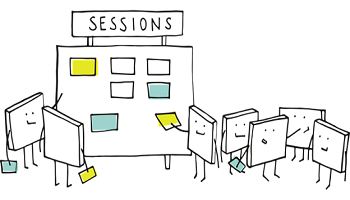Prepping Project Tech: A BA’s Guide to Finding the Right Technology
Technology helps business analysts — and the companies with which they work — thrive. However, that depends on how well a business analyst implements tech trends to incite growth.
Finding the right technology to optimize your duties as a business analyst and catapult a business to its next level is the hard part. Fortunately, this post can help. Let’s look at five modern tech trends that business analysts can use to help facilitate growth.
Internet of Things (IoT)
IoT refers to physical devices connected to the internet on a shared network and the technology that enables communication between these devices. IoT also collects data on the way these devices are used.
Many devices are connected to the internet these days. An ATM, for example, is one of the most common IoT devices used in the finance industry. Instead of needing a banking associate, you can conduct much of your financial business at an ATM. You can even save your preferences to streamline your interactions going forward. This wouldn’t be possible without IoT.
IoT is beneficial for business analysts because they typically use multiple tech devices at once. You want it to be easy to transmit and sync information across all your devices to ensure you’re making decisions with the most up-to-date information, no matter where you’re accessing it from. Essentially, business analysts can use IoT to take full advantage of a digitally connected world.
5G Networks
The internet is an integral part of navigating your personal and professional life as a business analyst. 5G networks are growing in popularity not only because they are helping more people get online, but also because they offer secure, reliable, high-speed internet connections. With access to high-quality internet, you can have constant, quick access to the digital tools you need to incite growth and improve business efficiency.
You can also better connect with internal teams and external audiences when you use 5G. For example, let’s say you’re working with an educational institution and you’re tasked with analyzing the budget to find where to cut costs. In that case, you will want a fast, secure network connection due to the confidentiality needed when working with educational and financial information.
You want to ensure that when you access sensitive data, the information isn’t vulnerable to cybersecurity threats because you’re using low-quality internet. 5G is also beneficial because you can communicate seamlessly with your team by tracking tech sign-offs, holding brainstorming sessions, and fielding questions.
Consider purchasing a 5G service if you want to use the internet with peace of mind and speed.
Advertisement
Machine Learning
Machine learning is a type of artificial intelligence. It uses data and algorithms to learn — and, eventually, mimic — human behavior from experience. Computers or software essentially learn to do what humans do without direct programming.
For example, machine learning is incredibly impactful in agriculture. The data collected is used to predict the quality of crops, reduce food production costs, and find defects in the irrigation system.
Business analysts can leverage machine learning to collect, process, and analyze vast sets of business data. As a result, you can pull more meaningful business insights from the information that prompt better decisions throughout the organization.
Automation Tools
Automation tools require little human intervention to carry out various tasks. Almost any business in any industry can find a use for automation tools. The tasks well-suited for automation are typically repetitive and mundane in nature.
For example, the healthcare industry uses automation software to queue up automated calls to remind patients of scheduled appointments. Email sequences and data collection are often automated in medical facilities, as well.
Business analysts can use automation tools to help streamline their repetitive tasks. You can also implement them in the businesses you work with to improve operational efficiency and free up team members’ time for more crucial projects.
However, implementing automation tools in any team’s workflow may be met with pushback. Many employees will hesitate because they fear that automation tools, such as artificial intelligence, will replace their jobs. However, you can get staff on board for tech transformation by sharing the bigger picture. In this case, that would mean showing them how the tools are intended to enhance their work rather than replace it.
Smart Devices
There isn’t an industry that can’t benefit from the responsible use of smart devices. Smart devices are intelligent, electronic devices that can connect to the internet, Bluetooth, apps, wireless connections, and other digital devices. Smart devices also interact with the person using them.
For example, you can connect your smartwatch to your smartphone and share data between the two. Both can also monitor specific vitals of the person using them, like blood pressure and heart rate, to reveal important health information.
You can absolutely hop on smart devices to facilitate growth as a business analyst. When you can access your work on devices that understand how you work, your decision-making and efficiency improve.
Conclusion
Business analysts need technology to succeed. You don’t have to adopt every technology trend you come across. Instead, thoroughly research each trend and weigh it against your needs to ensure it will help you and your clients blossom if you decide to implement it.

